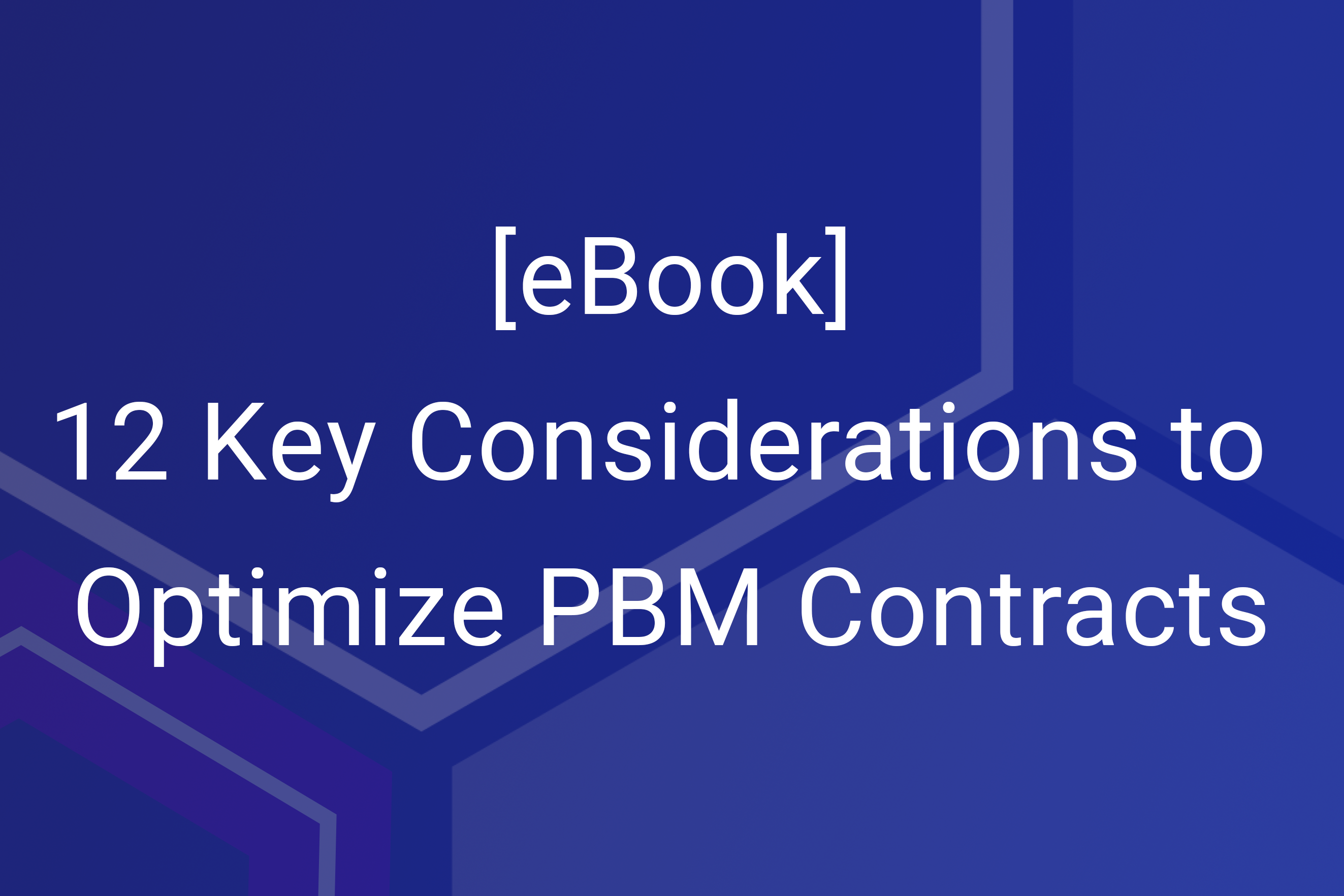When asked what their biggest benefit challenge is, employers consistently point to their increasing amount of healthcare spend. In today’s healthcare environment, employers and their brokers are navigating a shifting pharmacy landscape, including the rise of specialty spend, reduced PBM transparency, and the emergence of cost control strategies.
With so many considerations, it may seem convenient for employers to consolidate all their benefit services, including pharmacy, under a single contract with their broker or consultant. But what are the implications of moving from a traditional PBM arrangement to a pharmacy coalition model of decision making? Let’s explore how pharmaceutical coalitions work, how they drive PBM transparency, and the key considerations employers should keep in mind when evaluating them.
What is a pharmacy coalition and how does it work?
Pharmacy coalitions are essentially group purchasing organizations that bring multiple employer groups together to leverage collective bargaining power for better pricing and rebates with Pharmacy Benefit Managers (PBMs). The idea behind a pharmacy coalition is to enhance negotiating strength of drug prices through economies of scale.
However, it’s important to consider the trade-offs associated with controlling your pharmacy plan and spend within these arrangements.
There are two main types of coalitions:
- Independent pharmacy coalitions – Independent coalitions typically have contracts with certain Pharmacy Benefit Managers (PBMs). They sometimes offer increased transparency, providing clients with access to contract details and pricing information, fostering a clear understanding of the options available. Independent specialty pharmacy coalitions may be targeted directly at controlling the rising costs of specialty drugs.
- Broker or consultant owned coalitions – Consultant-owned coalitions may offer the convenience of consolidated benefits services under a single contract with a full suite of consulting services on top. However, some broker or consultant owned coalitions may consider their contracts and rates as proprietary information, restricting data access and limiting transparency on the discrete cost drivers of the employer’s pharmacy plan.
Pros and Cons of Coalitions for Larger Self-Funded Groups
For larger self-funded groups, coalitions can be an appealing alternative to traditional PBM models, especially with the rising demand for pricing transparency. Introducing coalitions into pharmacy procurement discussions beside PBMs can foster competitive pricing for the plan. However, the distinction between independent and broker-owned coalitions matters when it comes to contractual guarantees, data rights, and service.
Pros and Cons of Coalitions for SMBs
Small and mid-sized employers often find drug-pricing coalitions attractive, as they can often get the best pricing. However, it’s essential to consider whether the coalition’s pricing leverage may be influenced by strategic deals between the PBM and the coalition, which financially benefit the coalition or broker/consultant. There is no inherent PBM-coalition-gap in profit-seeking behavior, so vigilance is necessary.
Evaluate pharmacy coalition models beyond just their drug price offerings
When assessing pharmacy coalitions, it’s imperative to leverage strategies to gain transparency be understanding the nuances around coalition reporting, fees, and guarantees.
- Reporting – When evaluating a coalition, make sure you understand how they administer reporting so that you can closely track how your membership spend is performing. Also pay attention to the fine print around reporting, as proprietary data rights might limit your ability to conduct oversight and compare pricing across different options. Most employers benefit from leveraging customized, data-driven pharmacy reporting that identifies cost variances and measures contract performance.
- Membership Fees – Sometimes, broker’s coalitions might include “access fees,” based on the number of lives. Prior to joining a coalition, ensure that you understand associated fees around your membership.
- Guarantees – Joining a brokerage-owned coalition may not always ensure that the up-front investment will be repaid in pharmacy savings. Individual employers may not receive the exact guarantees agreed upon in their contract, as sometimes guarantees are dependent on the performance of the overall coalition’s book of business.
Your pharmacy partner matters – ensuring transparency to control pharmacy costs.
When acting to control pharmacy costs, it’s essential to partner with an independent and transparent pharmacy expert. A coalition with fewer financial ties to PBMs can secure competitive bids, offering transparency in drug pricing, reporting, and contract terms. Conducting thorough due diligence, asking pointed questions to partners, and involving an objective third-party for analysis ensures transparency and control over plan spend and coverage, fulfilling your fiduciary duty.
Prepare for the future of pharmacy coalition developments with a partner that keeps you informed. When evaluating a broker or consultant owed coalition, ask the following key questions to stay in control of your pharmacy program:
- Program customizability
- How much control will I have over our pharmacy benefit, and what aspects can I influence?
- Can you share information about exclusions, clinical criteria, or other means for understanding how savings are generated?
- Are contractual guarantees for the coalition as a whole or at the level of individual members?
- Who manages the benefit on behalf of the coalition?
- How do I know if the pricing and terms are as competitive as possible?
- Coalition pharmacy incentives
- What are the membership costs to belong? What benefits does the plan get from my membership fee?
- How is the broker and/or consultant incentivized to work with the coalition?
- Does the broker earn revenue for the company’s participation in the coalition?
- Can the broker or consultant commit to “no revenue” in the form of a signed document?
- Detailed reporting and oversight
- Will I have full access to our plan data? Can I take the data if we ever end the agreement?
- Are dollar-by-dollar financial details provided to me?
- How will I know if the contract is performing as expected?
- Does the coalition allow objective third-party audits or oversight?
Evaluating the pros and cons of joining a pharmaceutical coalition for patient access.
Careful evaluation is crucial for employers aiming to gain control over their pharmacy benefits and ensure transparency in pricing and terms. It also helps to understand the key metrics to measure when evaluating your success at achieving transparency in pharmacy contracts.
Partnering with an objective third-party will help you achieve the necessary transparency and control you need to optimize your pharmacy plan spend and coverage while also upholding your fiduciary duties. To learn more about the insights and capabilities provided by an expert pharmacy partner, get in touch with the Truveris team today.






